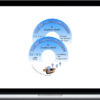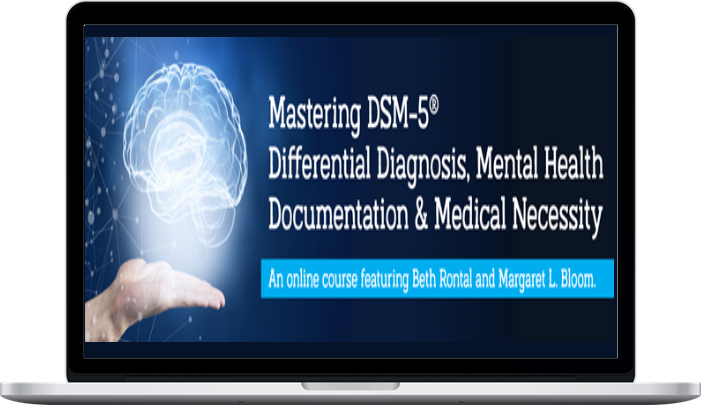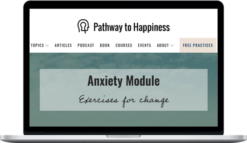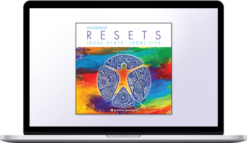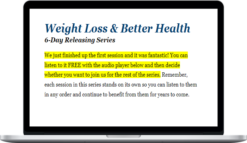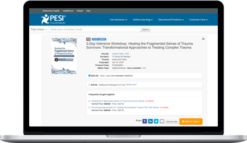Beth Rontal – Mastering DSM-5® Differential Diagnosis, Mental Health Documentation
$499.00 $53.00
Total Sold: 2
»Instant Delivery
Description
Beth Rontal – Mastering DSM-5® Differential Diagnosis, Mental Health Documentation
Learn proven, step-by-step formulas that will streamline your paperwork processes, help you avoid common diagnostic errors, and improve your client outcomes… without having to take your laptop home on nights and weekends.
When clients come into your therapy office, providing them with an accurate diagnosis is never as simple as we were taught in grad school — matching a “textbook case” to a simple DSM symptom checklist.
Instead, clients come in with an assortment of symptoms across diagnostic categories, complicated health concerns, and various life stressors all mixed together.
As a clinician who’s already stretched for time, how do you know exactly what and how much to include in your diagnostic assessments… providing enough detail to capture those concerns while still keeping up with the paperwork for all of your other clients?
In this advanced online course, you’ll master step-by-step formulas that will help improve your clinical outcomes and streamline your processes… even with the most challenging cases.
Join expert trainer, Dr. Margaret Bloom and “Documentation Wizard,” Beth Rontal as they reveal how to…
- Increase your confidence in diagnosing complex cases, and helping your clients get better outcomes in the process
- Protect you against audits and lost revenue, saving you time and unnecessary stress
- Decrease the amount of time you spend on paperwork, while still documenting the excellent work you do with your clients
(These are the same formulas that took one clinician from being on the verge of losing her job and drowning in paperwork… to being completely caught up and teaching others to improve their own processes.)
Here’s what you’ll learn in each of the course modules:
In this exclusive online training, these renowned experts use proven models, complex case examples, word-for-word scripts, and documentation samples to reveal…
Module 1 – Using the DSM-5® and ICD-10: Beyond the Basics and FREE Resources
- Where to find the newest updates to DSM-5® diagnoses (so you’re not misdiagnosing based on the outdated version on your shelf)
- The FREE assessment tools available online that you can use with your clients today
- What factors to consider when specifying the severity for the DSM-5® diagnosis
Module 2 – The Four-Step Diagnostic Method: The Formula for Complex Cases
- How this simple, four-step process leads you to more accurate diagnoses with complex cases
- The most common errors therapists make at each step in the process (and what steps to take to avoid them)
- How to use the “rule of 5” to make better clinical decisions for differential diagnosis
Module 3 – Differential Diagnosis of Specific DSM-5® Mental Disorders: What To Consider Before the Diagnosis
- The medical conditions, substances, and medications you must consider before diagnosing depression, anxiety, or thought disorders
- The 3×3 matrix that helps you easily differentiate between 17 anxiety disorders
- How to avoid using “garbage diagnoses” and what diagnoses to consider instead
Module 4 – Documentation: The Topic Clinicians Love to Hate
- The simple checklist you need to include to justify medical necessity for insurance
- “The Golden Thread” that reflects your work with integrity, respects client confidentiality, passes audits, and gets reimbursed by insurance companies
- Expert answers to the most common documentation questions – how much to write, when to write it, and what kind of notes you need to protect your professional integrity
Module 5 – Treatment Plans: Justifying Services for Insurance
- The 12 elements you need to include in all your treatment plans
- How to avoid writing cookie-cutter treatment plans (and what insurance companies really want you to include)
- “The movie question” to ask your clients during treatment planning to see how their family and friends view the problem
Module 6 – Session Notes: Connecting Your Weekly Work to the Grand Plan
- The comprehensive checklist of pieces you need to include in your progress notes, so you’ll feel confident in what you include and save time by eliminating the rest
- Examples of how to write interventions for different modalities (with specific wording for supportive therapy, CBT, IFS, and mindfulness)
- The #1 element to remove from your notes in order to maintain client confidentiality and save yourself time writing
Module 7 – Diagnostic Summaries: Much More than Just Diagnosis
- The 27 elements to include in your diagnostic assessments (including those that therapists sometimes forget to ask about)
- How to write your diagnostic summary to make treatment planning even easier
- What other resources to ask clients about that may make treatment with them more effective
Module 8 – Red Flags for Insurance Companies: Avoid These 20 Red Flags that Trigger Audits from Insurance Companies
- The 20 “red flags” that trigger audits and repayment to insurance companies (and what to replace those with to protect yourself)
- The specific diagnoses that insurance companies watch for, and how to justify them effectively in your paperwork
- Why “copy and paste” might cost your clinic money, and how small changes can make a big difference
More courses from the same author: Beth Rontal
Delivery Policy
When will I receive my course?
You will receive a link to download your course immediately or within 1 to 21 days. It depends on the product you buy, so please read the short description of the product carefully before making a purchase.
How is my course delivered?
We share courses through Google Drive, so once your order is complete, you'll receive an invitation to view the course in your email.
To avoid any delay in delivery, please provide a Google mail and enter your email address correctly in the Checkout Page.
In case you submit a wrong email address, please contact us to resend the course to the correct email.
How do I check status of my order?
Please log in to HealingCourse account then go to Order Page. You will find all your orders includes number, date, status and total price.
If the status is Processing: Your course is being uploaded. Please be patient and wait for us to complete your order. If your order has multiple courses and one of them has not been updated with the download link, the status of the order is also Processing.
If the status is Completed: Your course is ready for immediate download. Click "VIEW" to view details and download the course.
Where can I find my course?
Once your order is complete, a link to download the course will automatically be sent to your email.
You can also get the download link by logging into your HealingCourse account then going to Downloads Page.
Related products
Total sold: 4
Total sold: 3

